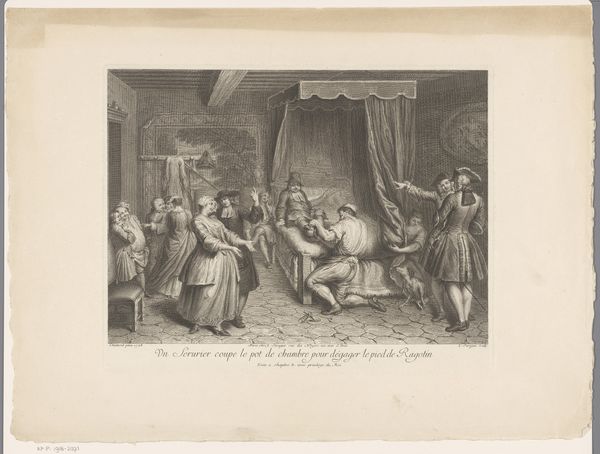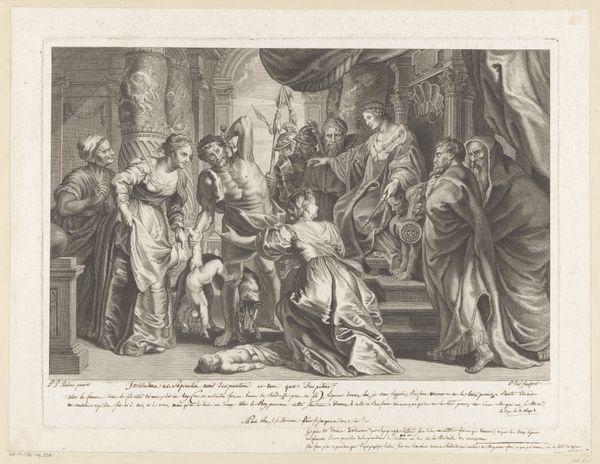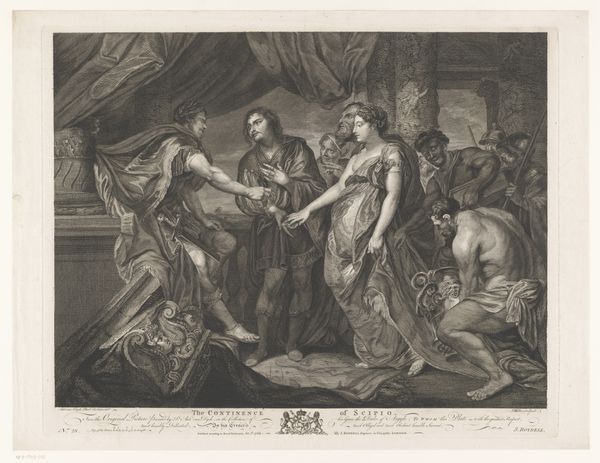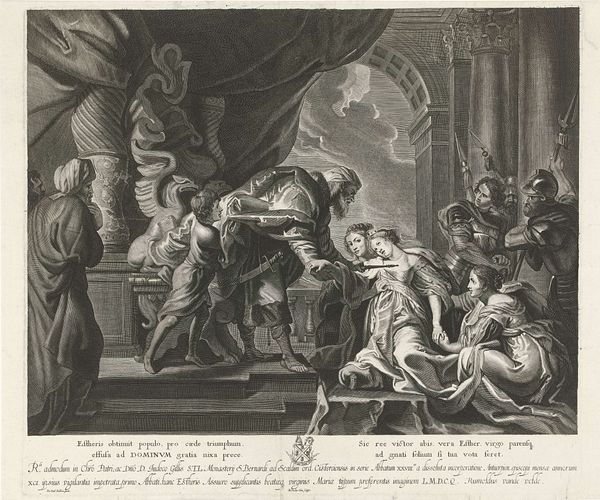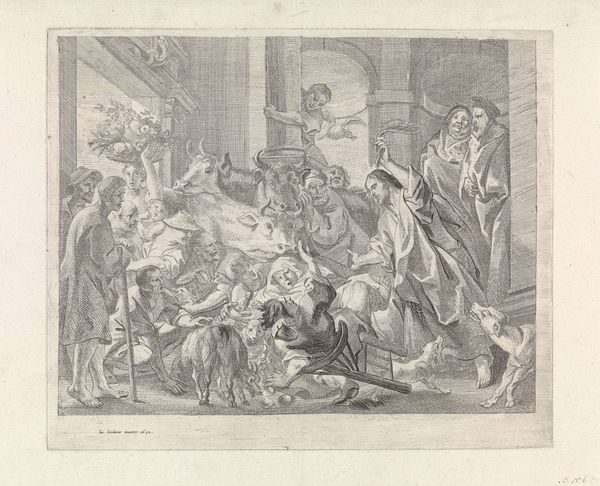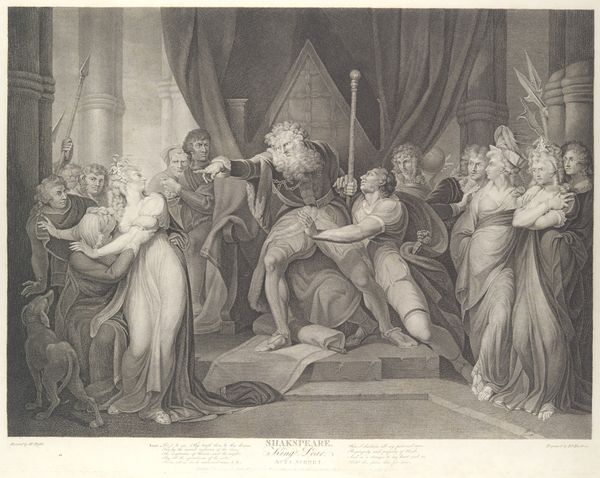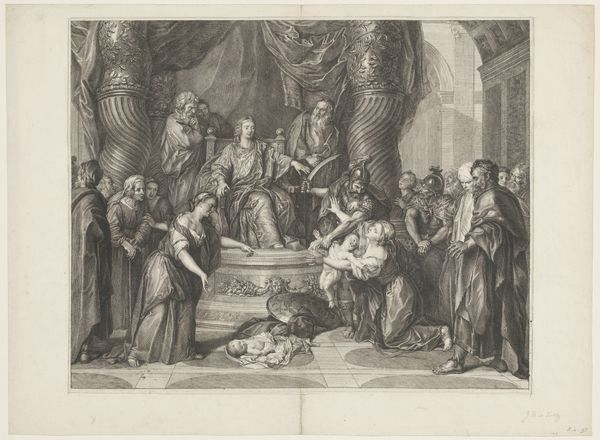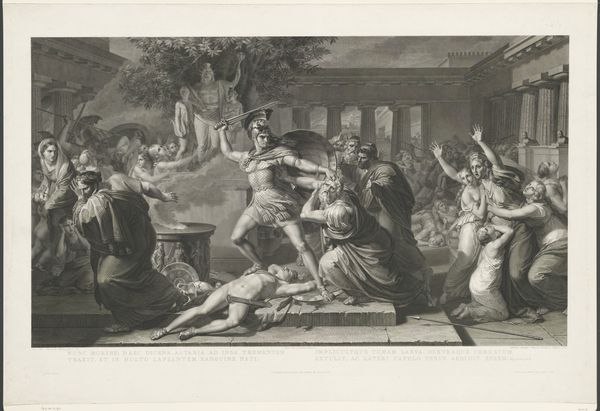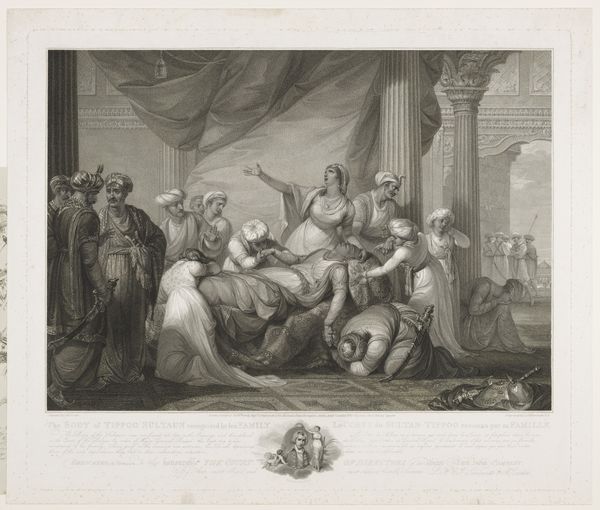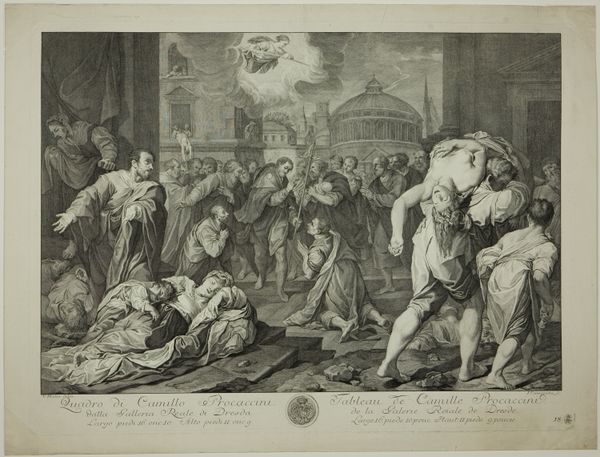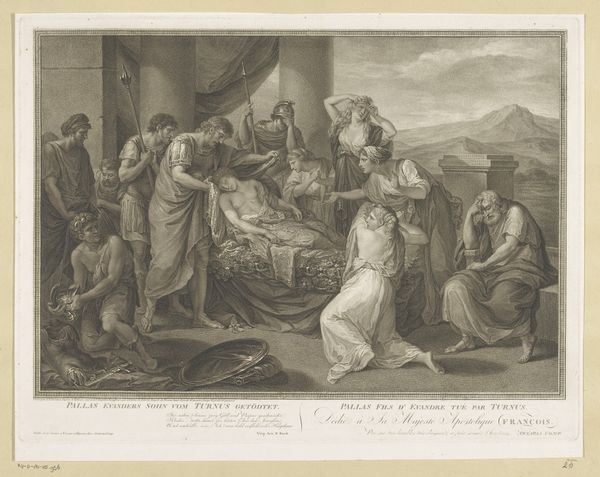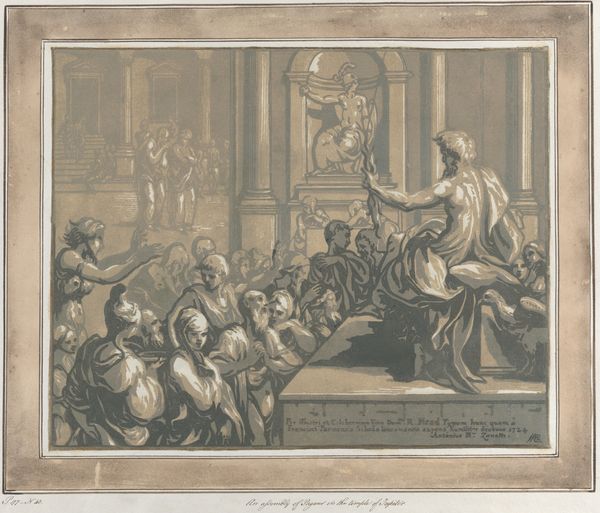
print, engraving
#
pencil drawn
#
neoclacissism
#
light pencil work
#
narrative-art
# print
#
pencil sketch
#
charcoal drawing
#
figuration
#
charcoal art
#
portrait reference
#
pencil drawing
#
19th century
#
history-painting
#
engraving
Dimensions: height 493 mm, width 600 mm
Copyright: Rijks Museum: Open Domain
Editor: Here we have John Hall’s 1769 engraving, “Pyrrhus as a child brought to King Glaucias for protection,” currently housed at the Rijksmuseum. I find the expressions on everyone's faces really striking, almost theatrical. What kind of story do you think the artist is trying to tell here? Curator: A very powerful one, laden with classical imagery and emotional symbolism. Notice the contrast between the king’s thoughtful pose and the almost frantic gestures of those bringing Pyrrhus forward. The child, nearly nude, represents vulnerability but also the seed of future power, a narrative familiar from antiquity forward. Editor: Future power? You mean, the image is not *just* about this single event? Curator: Precisely! This image serves as a visual emblem, encapsulating the anxieties and aspirations projected onto rulers throughout history. Pyrrhus was, of course, a warrior king of Epirus, one of the greatest generals of antiquity. The scene is heavy with a kind of premonitory tension, suggesting both protection and potential betrayal, acceptance and inherent threat. Does the composition remind you of any traditional depictions of biblical or mythological scenes? Editor: Now that you mention it, the arrangement *does* feel somewhat like an Annunciation or a Presentation at the Temple – just relocated to ancient Greece. The child is central to the composition, drawing focus and visually predicting his future import, just like Jesus in traditional Christian iconography. Curator: Exactly! It’s an ingenious recasting, using familiar visual language to elevate Pyrrhus' story into a broader commentary on the burden and blessing of leadership. Consider how it might be interpreted by different audiences across time…what anxieties or hopes does it assuage? Editor: I never considered the connections between this classical scene and religious painting. Thanks for drawing that out. Curator: And thank you. These connections exist to show how symbols create an arc from the past to the present.
Comments
No comments
Be the first to comment and join the conversation on the ultimate creative platform.
